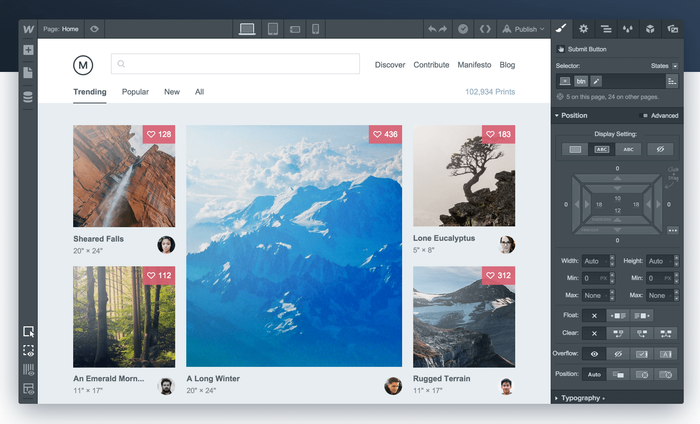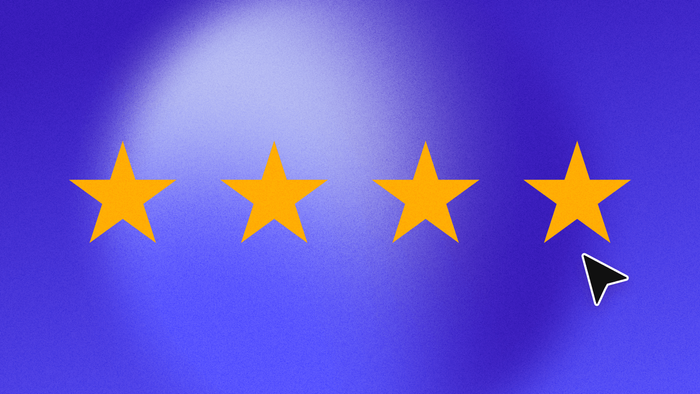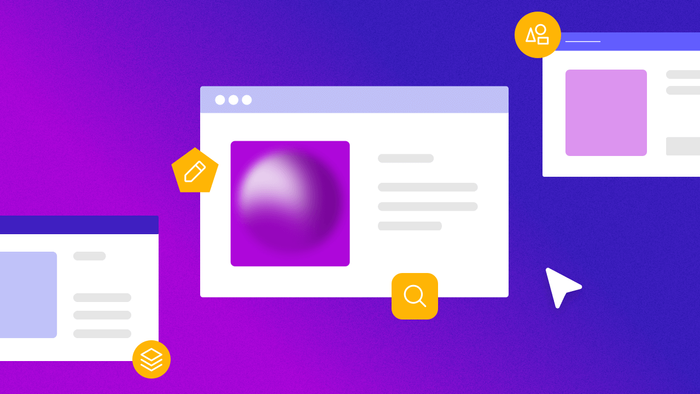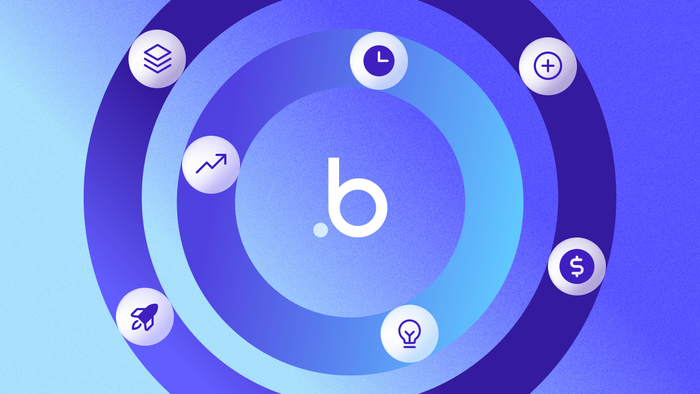At Bubble, we want to enable potential builders to create their ideas without code, so we are exploring and reviewing the many tools and software that entrepreneurs might use to build apps.
What is Webflow?
Webflow describes itself as a responsive web editor with a content management system (CMS) and e-commerce enabled sites.
Webflow acts as an evolution to platforms like Squarespace, Wix, and Weebly. These sites help develop templated websites but are often tragically limited in their basic functionality to templates that have a very similar visual style (Squarespace) or don’t have robust functionality outside of landing pages.
Webflow allows for more depth on what you can do behind the scenes; for a variety of different prices, you can add certain features that can help you build a website or basic e-commerce platform.
Inspired by the legacy of HTML/CSS-based design, Webflow allows you to export your site to various codes while designing it all without code.

Who is Webflow for?
Users of Webflow include online businesses, prototyping for larger companies, marketing teams, freelancers, and agencies.
People who want to build slightly deeper websites based around content management systems, or who want to showcase part of their business online, will find Webflow useful to help frame and build their sites.
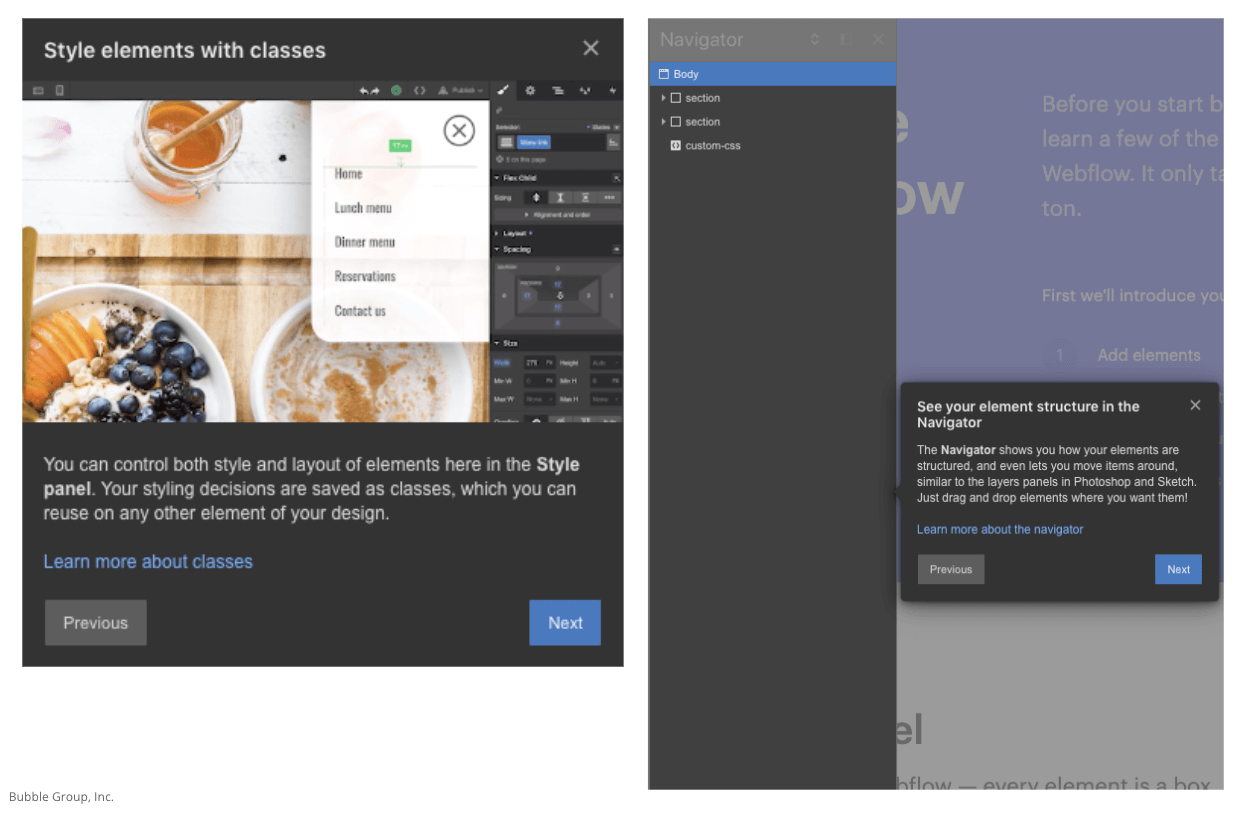
Webflow Cost and Pricing?
(Pricing model evaluation: September 2022)
Webflow’s pricing is a little complex. You pay per month to host your app, but Webflow has over ten different tiers of pricing structure, including plans that are paid by account or by individual application, with “e-commerce” features enabled or not.
Pay by Application: With monthly pricing, Webflow plans start at $18 a month for a basic plan for a single app/website, targeted at sites that don’t need a CMS and have up to 25,000-page visits a month. The highest tier in this category is business pricing ($49/month) unless you want an e-commerce-enabled site, which then starts at $29/month and moves up to as high as $212/month.
Pay by Account: In addition to the plans above, you can also pay to develop multiple apps by paying $16-35 a month, or if you’re a team, $35 a person minimum.
With this current pricing structure, it can be hard to determine what exactly you need for your specific project since each tier has different features enabled for it.
Webflow vs. Bubble: A Comparison
How does Webflow compare to Bubble?
Similarities between Webflow and Bubble:
Both Webflow and Bubble are no-code web app development platforms.
Both have hosting integrated on their platforms for a monthly subscription price.
Both Webflow and Bubble currently have a free plan option.
Both have responsive editors to see how your app will look like across a variety of platforms but do not yet support native app development (as of May 2020). Community members have found ways to convert their apps to mobile app stores using wrappers like Median, Dropsource or Cordova.
The key differences between Webflow and Bubble are:
Web Editor Design: Webflow’s design snaps to a grid, meaning there is limited freedom to where you can place elements, but elements also automatically apply styles to provide elegant design consistency. Bubble allows for full freedom and pixel-perfect placement of any element but with freedom comes responsibility over how styles are enforced.
Workflows: Webflow is geared toward mostly front-end event and element triggers, with easy-to-use CMS-based database functionality. Bubble allows for both front and back-end events and element triggers, and Bubble comes with full database functionality beyond CMS. Things like handling conditional situations, connecting to any API or backend, and features such as a comments system or an upvoting system are easier to build in Bubble, but harder to achieve in Webflow.
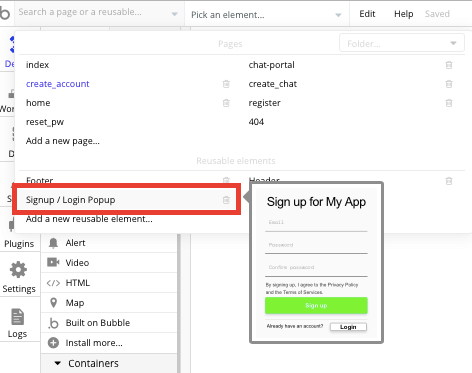
User management system: Bubble comes with a pre-made sign-up/login workflow for users, including connecting to external services (signing in with Facebook, Twitter, Google, etc.) Webflow requires users to build a user management system.
Alternatives to Webflow
Alternative no-code CMS platforms or tools that allow you to build a web application without code include the following tools:
If you’re looking for a platform that has support for native or mobile apps, consider using no-code tools like Adalo, Glide, or Thunkable.
If you only need basic landing pages and simple CMS, or would rather use a website template, consider templated website hosts like Squarespace, Wix, or Weebly as alternatives.
If your needs extend beyond CMS (like building a full marketplace) and you require full backend database functionality built-in, no-code platforms like Bubble are a good alternative to Webflow.
If you want an open-source CMS platform with robust plugins, try WordPress.
If you’re looking for a no-code platform with an enterprise focus, Unqork, Retool, and Betty Blocks are good options.
About Bubble
Bubble is a leader in the no-code movement. Bubble offers a powerful point-and-click web editor and cloud hosting platform that allows users to build fully customizable web applications and workflows, ranging from simple prototypes to complex marketplaces, SaaS products, and more. Millions of users are building and launching businesses on Bubble - many have gone on to participate in top accelerator programs, such as Y Combinator, or raise $365M in venture funding. Bubble is more than just a product. We are a strong community of builders and entrepreneurs that are united by the belief that everyone should be able to create technology.
Disclaimer: The goal of these reviews is to provide an honest, practical, differentiated comparison of features and educate readers on tools in the no-code ecosystem so that you can evaluate how these services fit together and serve your needs.
Build your app on Bubble's Free plan. No need to upgrade until you're ready to launch your app.
Join Bubble
